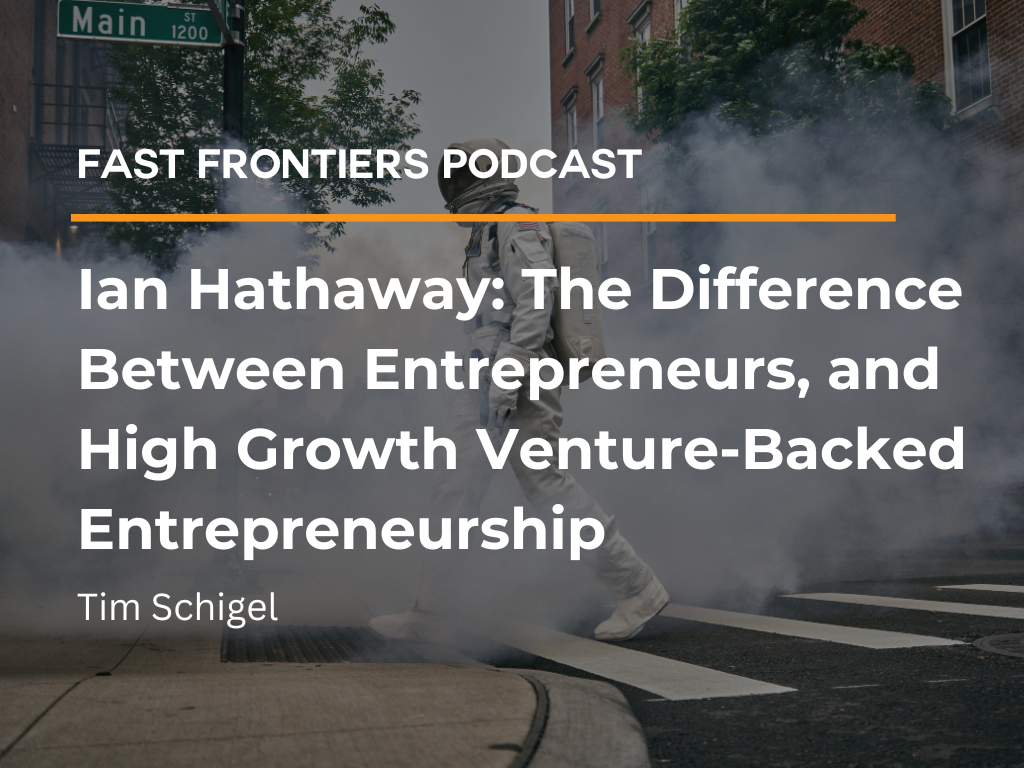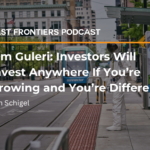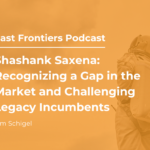A recent podcast guest was Ian Hathaway, a strategist, economist, writer, and entrepreneur who advises several different startups and venture capital-backed startups. He also currently leads product development for ecosystem advisory at Techstars, among his many other endeavors.
Throughout our podcast session, Ian and I discussed so many relevant subjects, but today, I want to focus on Ian’s insights regarding the difference between entrepreneurs, venture capital entrepreneurs, and high growth entrepreneurship.
Hi Ian. We know there’s a difference between entrepreneurship generally—broadly speaking—and venture backed entrepreneurship that you’re involved with through Techstars. What do you think about those differences, and how is that possibly even changing those gradations when getting resources to entrepreneurs who maybe aren’t going to create a unicorn, but they’re going to create a very vibrant business?
“I think that’s important to talk about … Maybe we could do a quick level set on what we mean by entrepreneurs. About three-quarters of nascent entrepreneurs—people who are in the process of starting a business or have recently formed one—have no growth ambitions whatsoever. They’re doing it to be their own boss, for other non-economic reasons. So we have the small business economy. I think of entrepreneurs as having an ambition to do something new or different and a desire to grow.”
After defining entrepreneurs, Ian continued: “Now that we’ve isolated the subset, we know empirically that a very small number of firms drive the substantial majority of job creation, productivity gains, and innovation. There are parallel distributions in the business sector, as there are in many other sectors. We’re seeing these trends being accelerated in recent years across households, across the labor market, and across businesses. But in fact, a very small number of even high-growth businesses will ever raise venture capital. I think the number is something like a half a percent of all U.S. businesses. So what we’re talking about is a really important but really small segment of the economy.”
Ian continued to delineate: “Now, some research that I’ve done in the last few years with Richard Florida, we’ve produced a study looking at the geography of venture capital globally, including in the U.S. I think we looked at 200 U.S. metros, and there were something like 500 globally [concentrated in particular cities]. We are finding that there is a rise of the rest going on… It’s an empirical reality. There are some nuances to that, but I want to state emphatically that the rest is rising in the United States. It’s not happening everywhere, but it’s happening in more places.”
Let’s talk about ecosystems and networking, specifically the idea that if you can rally around the few companies that show the best chance of success and ensure that they’re successful, then you’re likely to spread and bloom from there. How does that relay into high-growth entrepreneurship, for instance?
“Well, [with] entrepreneurship—especially high-growth entrepreneurship—and even more so venture-backed high-growth entrepreneurship, it’s all about the outliers, [where] these ecosystems are rife with non-linear outcomes and behavior, and the human mind really struggles with that concept,” Ian shared, before offering a personal experience as an example.
“A great story is from just down the road in Indianapolis with ExactTarget, Scott Dorsey. Amazing person, great company. For your listeners that maybe don’t know, $2.5 billion exit, sold to Salesforce, so a huge imprint. It brought Salesforce to town. I think 2,000 employees or something. Now they’re part of the Salesforce ecosystem. Salesforce is hiring employees there. They’re growing their footprint in the region. But after the exit, Scott said, ‘Okay, I’m going to go and build High Alpha,’ which is a venture studio and fund. So he’s investing in the next generation of entrepreneurs, and he wants Indianapolis to be the next great startup hub. So that’s a key thing,” Ian explained.
Ian elaborated: “We talk about that in [my] book [The Startup Community Way: Evolving an Entrepreneurial Ecosystem] when we refer to it as entrepreneurship recycling. So that first success can have a permanent, seismic shift in the longevity of your ecosystem, but it’s not guaranteed. It depends what happens after that success. Do people re-engage? That’s different than saying a serial entrepreneur who’s just going to go do “it” again, which is actually what I’ve seen—the data—there’s a negative correlation there.”
Ian concluded his example, bringing his concept home: “Too often people underestimate the role that luck and timing has played in their success, so they think anything they touch can turn to gold. It’s not always true. It’s seldom true. But what Scott’s doing that’s different [is that] he’s not going to build another company—a company in a silo. He’s planting many seeds. He’s helping to create many different companies, out of which maybe another couple successes will come of out those.”
To learn even more about entrepreneurship, and high-growth entrepreneurship in the venture capital arena, listen to this and other episodes from our season 1 of Fast Frontiers.



